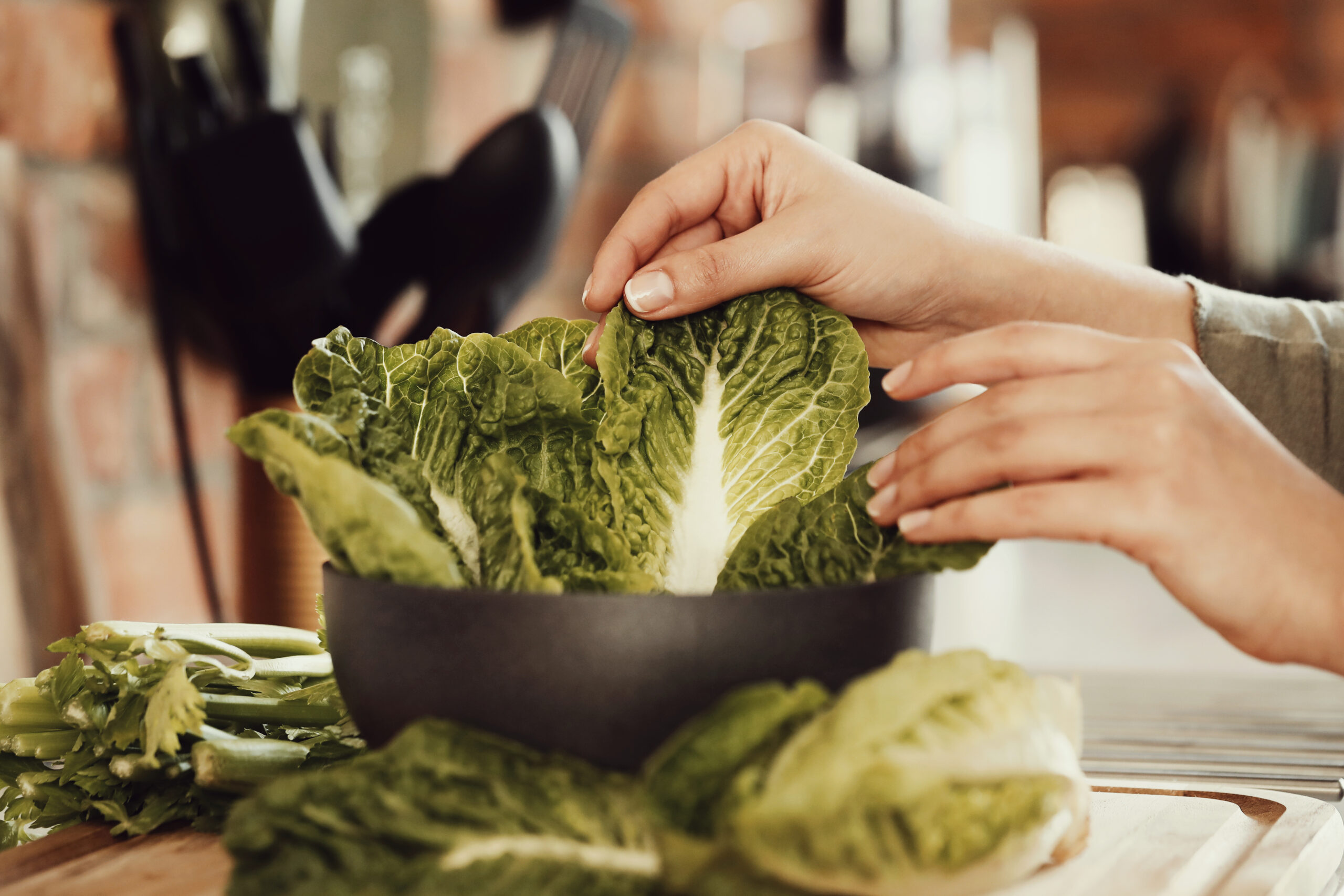The human body is likely to benefit more from green food in terms of health, and when we think of green food, we typically think of spinach and kale. Rich in nutrients and health advantages, spinach and kale are both great for a balanced diet. Lechuga Romana, however, is another green vegetable that is well-known for its heart-resistant variations and freshness.
Rich in nutrients, the centerpiece of the salad is Lechuga Romana, often known as “Romaine Lettuce.” Although there are many different kinds of lettuce, this is the most well-liked one. Lechuga Romana is a Spanish term that is also known as Cos Lettuce in Britain and Romaine Lettuce in North American English.
We shall explore the advantages of this lettuce and all of its nutrients in this article. When Romaine Lettuce is added to dishes, there are some tasty and crisp options. We will also discuss some disadvantages and how to prevent them.
What is Lechuga Romana?
Romaine lettuce, also known as Lechuga Romana, is one of the most widely consumed types of lettuce in the United States. It’s likely that you’ve seen it in American and Canadian burgers, wedge salads, chopped Caesar salads, and more. At 30%, it is the most popular kind of lettuce in America.
In contrast to other types of lettuce, this variety has greener leaves at the top, with a crispier white rib located in the center of each leaf. Its bottom is white with a faded green hue, giving its profile a unique flavor. Although the leaves don’t have much flavor, they taste better when combined with other dishes.
You’ve probably seen the red type of Lechuga Romana in grocery shops. It has purple-reddish leaves at the top. Without salad, the meal table appears empty, and without green lettuce, the salad appears empty as well.
Nutritional Value
It’s highly nutritious to provide a crisp, new flavor to salads and other foods. Lechuga Romana, or Romaine Lettuce, has a variety of elements that are good for your health, including fiber, vitamin K, vitamin A, and folic acid. Diseases including high blood sugar, high cholesterol, and aggressive forms of cancer can benefit greatly from it.
To help you better understand the value of Lechuga Romana, below are the nutrients for 1 cup (47 grams) of chopped lettuce that are indicated in the table.
| Calories | 8 |
| Carbohydrates | 1.6g |
| Fiber | 1g |
| Protein | 0.6g |
| Fat | 0 |
| Sodium | 8mg |
| Folate | 64mcg |
| Vitamin A | 205mcg |
| Vitamin K | 48mcg |
The nutrients in romaine lettuce provide multiple health benefits:
Vitamin C: Rich in antioxidants, vitamin C helps maintain strong bones and teeth and supports the immune system.
Calcium: Blood coagulation, muscle contraction and maintenance, nerve transmission, and bone formation all depend on calcium.
Vitamin K: Additionally required for blood coagulation is vitamin K. In conjunction with calcium, it prevents osteoporosis-related fractures and the loss of bone material.
Vitamin A: A nutrient that is essential to health is vitamin A, which is derived from beta carotene. Vitamin A is an antioxidant that promotes healthy cell division and reproduction. It also supports the health of the kidneys, lungs, and heart. The eyes are also supported by vitamin A.
Folate: One B vitamin that helps with cell division, DNA synthesis, and genetic material generation is folate. Pregnant women who are deficient in folate may experience early birth, low birth weight, or spina bifida as a result of their pregnancy.
Phosphorus: Together with calcium, phosphorus helps to form strong teeth and bones.
Magnesium: Magnesium eases muscle tension and supports the activity of enzymes in the body. It builds tissue in conjunction with calcium.
Potassium: An electrolyte that aids in normal heartbeat is potassium. It aids in normal muscular contraction and maintains nerve activity. Additionally, potassium promotes the effective movement and uptake of nutrients by your cells. It lessens the harmful effects that sodium, or salt, has on the body.
Lechuga Romana Health Benefits
Romaine lettuce offers a number of health advantages, much like many other plants. It has numerous health advantages and gives salads and other foods a crispy, juicy flavor. Any diet plan, whether it’s for weight loss or muscle gain, calls for lettuce leaves. Here are several perks and health advantages of eating lechuga romana, though.
Beneficial for Bone Health
As previously noted, vitamin K, which is necessary for bone health and advantageous for blood clotting and wound healing, is found in Romaine lettuce. Research has indicated that compared to other lettuce kinds, Lechuga Romana contains more essential elements for bone health.
By eating crisphead lettuce, you may strengthen your bones by providing them with additional nutritious nutrients. Additionally, you can have beans, carrots, broccoli, chicken breast, and pine nuts with romaine lettuce. These foods are also rich in vitamin K, which helps to strengthen your bones.
Supports Eye and Skin Health
Green is a calming color for the eyes and brain. It makes us feel at ease. In a similar vein, eating green foods like romaine lettuce gives our bodies and eyes essential nutrients. This leafy vegetable has numerous benefits for the skin and eyes.
Furthermore, it uses vitamin A to boost and fortify our immune system. Lechuga Romana grows by exposing its leaves to the sun, which helps the plant absorb more carotenoids from the sun’s rays. This is how the plant grows. As its leaves get longer, it has higher levels of carotenoids than other varieties of lettuce.
As previously said, it strengthens the immune system and promotes wound healing. Strong immune systems enable the body to fend off illnesses with ease and recover from illnesses more quickly than they otherwise would. It also gives our skin an amazing shine that makes it appear fit and healthy.
Provides Folate
A healthy heart can benefit from romaine lettuce. By supplying nutritious nutrients to reduce the danger, it also helps prevent anemia and congenital impairments during the first trimester of pregnancy. It also offers a rich quantity in comparison to other green food sources of folate, such spinach and avocados.
Folate provides heart-healthy nutrients that strengthen the heart and help avoid heart problems. To strengthen and improve the health of the heart, a diet rich in nutrients is necessary. Because it is so full of nutrients, lechuga romana is one of the most important meals for living a healthier lifestyle.
Antioxidants
Lechuga Romana is a nutritious food that also has a high antioxidant content, which lowers the risk of diabetes, cancer, inflammation, and heart disease. Romaine lettuce also contains lutein, a pigment that lowers the risks associated with aging-related visual impairment and promotes eye health.
This lettuce also strengthens the immune system, the heart, and the urinary system. Anthocyanins are concentrated in high concentrations in red romaine lettuce. It gives the leaves’ tips a fusion of crimson and purple hues. According to the study, its compounds can help prevent Parkinson’s and Alzheimer’s disorders.
Romaine Lettuce Food-Safety Concerns
Lechuga Romana provides a lot of nutrients, but you should be aware of some disadvantages as well.
Food Poisoning Risk
Although romaine lettuce is useful and healthful, raw leaves can harbor bacteria and pathogens such as Salmonella and E. Coli. These are found in the leaves or on their surface and are toxic. If raw produce is handled unsafely, it can make you sick. When E. coli was discovered in romaine lettuce in 2018, it resulted in an outbreak that sickened 200 individuals.
Though anybody can contract food poisoning, those with weakened immune systems, including elderly people, small children, and pregnant women, are more susceptible. Nevertheless, if you heed the advice of the CDCP (Centers for Disease Control and Prevention), you can steer clear of these safety hazards.
The following are some guidelines for handling food:
- Wash your hands for 20 seconds with clean water and a germ-removing soap before handling any food.
- Throw away the ripped and bruised leaves.
- Use the cold running water to wash the leaves.
- Rub leaves together gently to get rid of any dirt that is apparent.
Tips for Enjoying and Savoring Romaine Lettuce
Lechuga Romana is yours to enjoy whatever you like. It’s up to you whether you combine it with a basic or Caesar salad. Its crispier and more juicy flavor can also be enhanced by mixing it with other fruits and adding a little cream. This crispy, wholesome slice completes wraps and sandwiches.
To have the greatest burger, place it between buns and chicken along with its crispiness. Shredded lettuce also gives your wraps and tacos more flavor and crispness. If you’re sick of eating raw leaves, try grilling them with olive oil, or try them with chicken breasts or stakes for a unique culinary experience.
Or you might try creating your own recipes with full or nutritious ingredients for a unique and healthful taste. One thing, nevertheless, that you should keep in mind is to always add leaves to cuisine as the very last component and to make sure they don’t wilt.
How to use romaine lettuce at home
Fresh vegetables is ideal, just like any other. Eat romaine as soon as possible after buying it. Rather than buying a whole head of romaine lettuce, you can get the hearts. The leaves on the outside, however, have the highest nutrient density. Whichever kind you purchase, be sure to give it a good cleaning to get rid of any dirt or debris.
Though it’s probably best recognized for its use in Caesar salad, romaine lettuce tastes great when grilled, halved, and drizzled with olive oil.
When it comes to adding extra nutrients to your family’s meals, romaine lettuce works well as a cushion for any kind of crispy dish. To add nutrition and fiber, cut and scatter romaine lettuce abundantly over this delicious sweet potato black bean tostada.
Because romaine leaves are big and robust, they work well as a wrapper or as a sandwich bread alternative. Just spread your filling onto a romaine leaf, roll or fold it up, and enjoy.
If you want to make a nutritious lunchbox treat for your child, you can use a toothpick to hold your creation together. Just make sure the toothpick is positioned conspicuously and is a bright color to prevent inadvertent biting.
Romaine can be added to any kind of salad or used as a garnish for tacos or chili. It can also be added to stir-fry meals because it is substantial enough; just make sure to add it last to avoid overcooking.
Conclusion
Romaine lettuce, sometimes known as lechuga romana, is a nutrient-rich, healthful vegetable that you can eat every day. Make sure you have always washed it thoroughly before using it in your diet or to enhance the flavor, crispiness, and nutritional value of food. While giving you the most essential healthy, nutritional components to help you prevent numerous diseases, the Romaine lettuce will enhance flavor.













